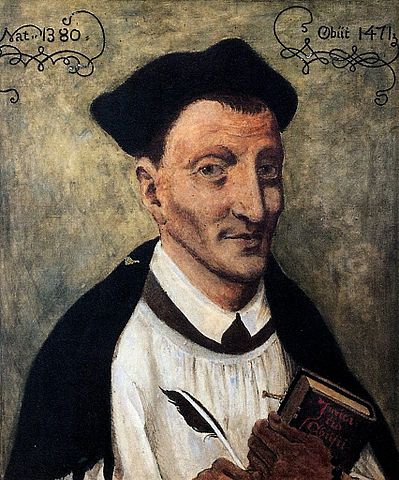Week Seven : introduction
|
|
Thomas à Kempis (ca. 1380-1471) Thomas Hammercken was born in the Rhineland town of Kempen and attended at nearby Deventer in Holland taught by the Brothers of the Common Life. Thomas of Kempen, as he was known, was so impressed by his teachers that at the age of 19 he entered their monastery of Mount St Agnes near Zwolle in Holland. There he stayed for the rest of his life. Thomas preferred the quiet of his cell to the challenges of leadership and administration; he was pleasant but retiring. The other monks eventually recognized Thomas's talent for deep thought and stopped troubling him with practical affairs. He wrote sermons, letters, hymns, and texts about the lives of the saints. Thomas reflected the mystical spirituality of his times and the sense of being absorbed in God—most famously in his work The Imitation of Christ. This small book came to be, after the Bible, the most widely translated book in Christian literature and is the source of our readings this Holy Week. The art works are by Dr He Qi. Currently a Minnesota resident, He Qi studied art in China and Germany and was the first mainland Chinese since the Cultural Revolution to earn a doctorate in religious art after the Cultural Revolution (1992). He also holds an honorary doctorate of the Australian Catholic University and numerous other distinctions and awards. Since 1983, He Qi has been committed to creation of modern Chinese Christian art. He seeks to change the image of Christianity in China as 'foreign' by using imagery familiar in China—while,at the same time extending the artistic vocabulary of China. For music in this last week of Lent, we have sacred works performed by the British group, The Sixteen, directed by Harry Christophers. |
